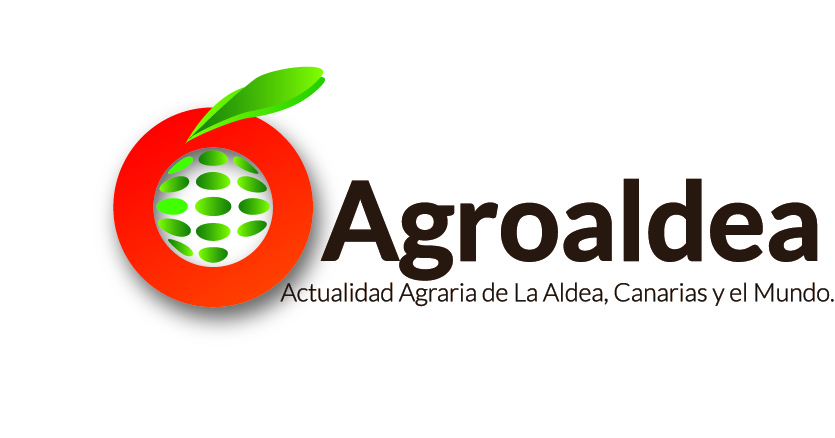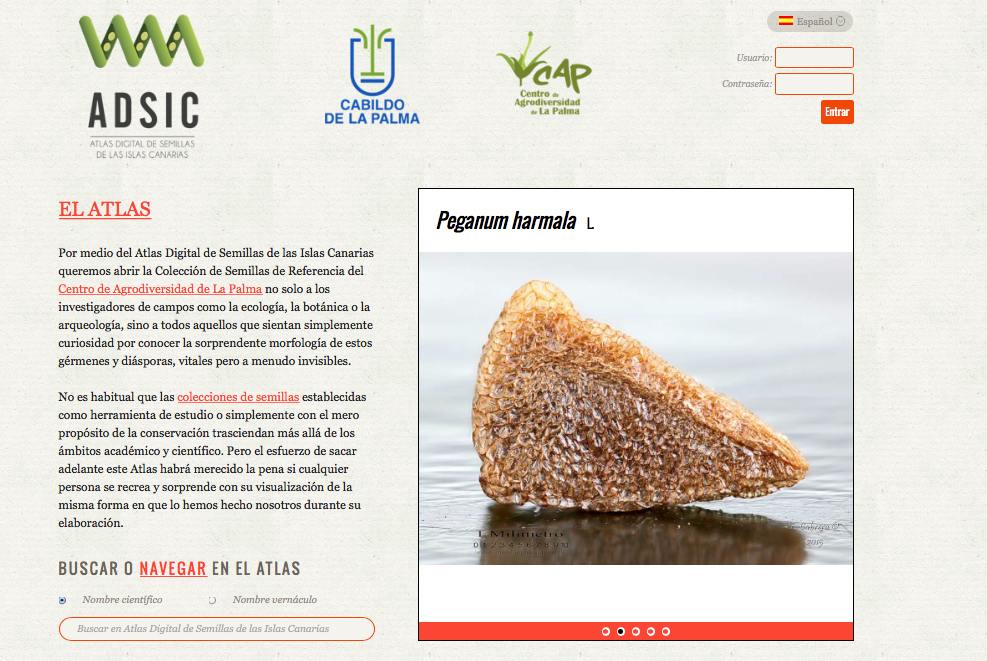 Agrodiversity Center Palma (CAP) It has made this project that is already available on internet.
Agrodiversity Center Palma (CAP) It has made this project that is already available on internet.
The Cabildo de La Palma has presented the Digital Atlas of Seeds of the Canary Islands. The Minister of agriculture, Jose Basilio Perez, has released "this work of great interest to the scientific community and a regional reference commissioned by his department and which is now accessible to the general public through the portal http://www.atlasdesemillasdecanarias.org/
The project has been carried out since La Palma Agrodiversity Center (CAP), an organism of the Cabildo palmero. “It is a complex project, novel and ambitious, And what is more important: is a pioneer in the Canary Islands and Spain, and even in europe, since there is only a similar one carried out by the University of Groningen in the Netherlands ", José Basilio Pérez has highlighted.
The Minister of Agriculture explained that for the opening of the website have been initially developed 100 cards corresponding to as many botanical species. "Seeds are an especially useful tool for studies within fields such as botany, the arqueology, ecology and ornithology, among others", José Basilio Pérez has highlighted.
The extensive list of collaborators in the project (photographs from 23 people or institutions and seeds from 28 collectors) gives an idea of its complexity and its function as a tool for bringing together information from many different sources ". “It is the intention of the Cabildo that, now, other institutions participate in this project ", added José Basilio Pérez.
The fact that this project “was conceived in La Palma is due to the involvement of the agronomist and specialist in this field, Jaime Gil, with the CAP and the opportunity arisen in the second semester of 2014 when Gil began in this center the elaboration of a Collection of Reference Seeds of Wild Species of the Canary Flora.
350 wild species seeds.
"Although there were already some reference seed collections located in various institutions in the Canary Islands, none of them is accessible through the web and its study, that is not always possible, implies long negotiations, physical presence and excessive expenditure of time and money, inappropriate given the technological advances that have occurred in recent decades ", the technician pointed out today.
That was “the genesis of the Digital Atlas of Seeds of the Canary Islands, a project directed by the aforementioned Jaime Gil and supervised by Neftalí Castro, through which they have already been incorporated into the centre's collections around 350 seeds of wild species ".
“Special attention has been paid to ensure that all the islands of the Archipelago are represented, also avoiding the collection of those seeds from species present in the Canary Catalog of Protected Species ", underlines.
The incorporation “to the project of seeds of these cataloged species has been carried out through their transfer by institutions such as the La Orotava Acclimatization Garden, the Autonomous Body of National Parks, the Museum of Natural Sciences and Man, the University of Las Palmas, etc, or through the technicians involved in the monitoring studies of said species ".
This project has had “also the collaboration of Facundo Cabrera, who has been in charge of carrying out a minimum of 2 from 3 photomicrographs of each seed in order to faithfully reflect their morphology, and with Daniel Martín, responsible for the website that houses all the content of the project and that is offered in its entirety in both Spanish and English ".
In the Web page http://www.atlasdesemillasdecanarias.org/ are presented "in this first phase of the project 100 cards corresponding to as many botanical species in which the morphological description of the seed and the plant that produces them is shown, including in each one of them information related to its ecology, vernacular names, bibliography, notes of interest, etc.
Each card is also accompanied by photographs of the seeds and plants in the field, and occasionally a digitized herbarium sheet ". Also, "The points where these seeds were collected and the distribution of the species in our closest geographical environment are shown on the cartography".

